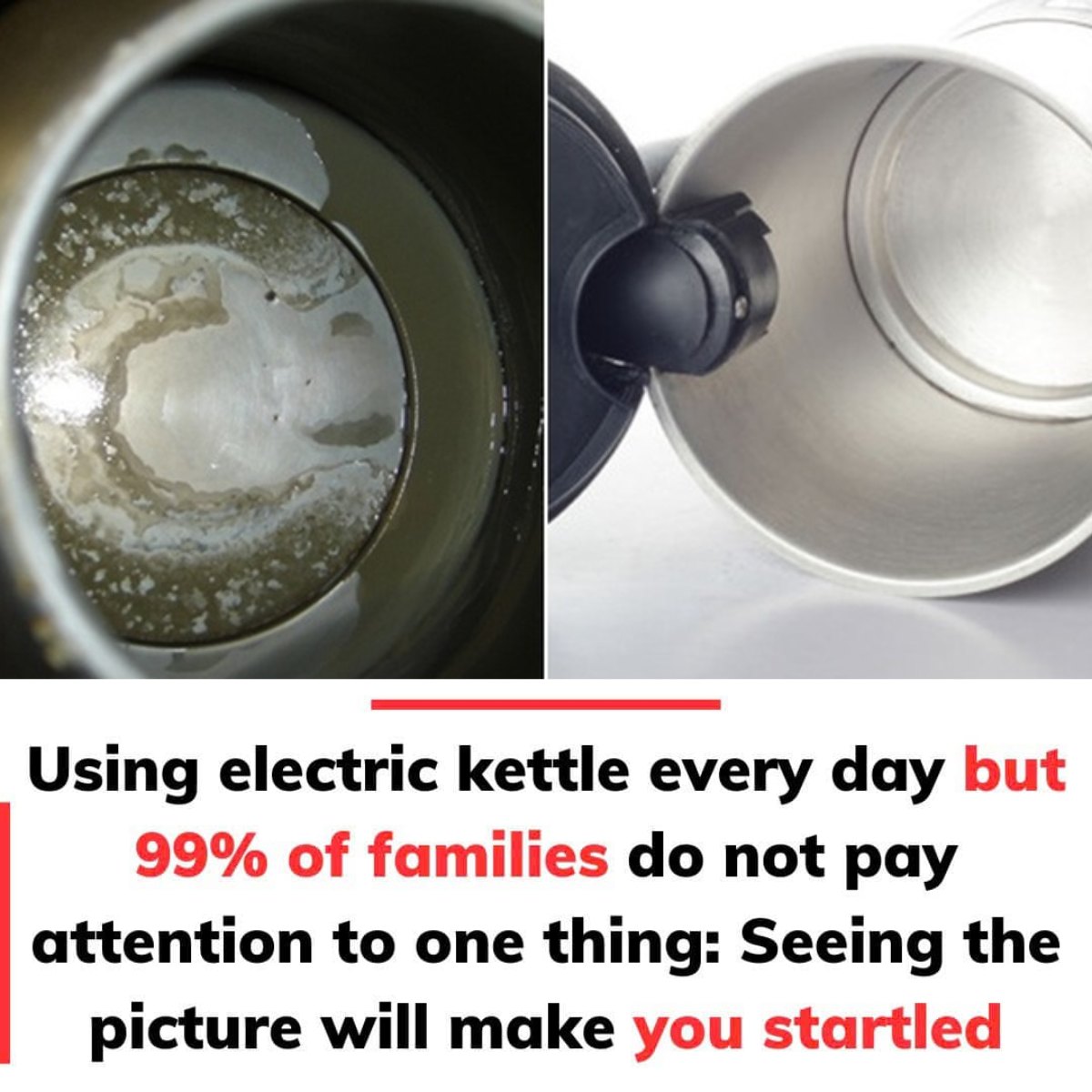In today’s busy world, electric kettles have become an essential tool in nearly every household. Whether it’s for brewing a comforting cup of tea, preparing instant coffee, or boiling water for cooking, these compact appliances are used multiple times a day. However, despite their daily importance, one critical aspect of electric kettle ownership is often overlooked: regular cleaning. It might seem like boiling water is enough to keep the kettle clean, but this assumption couldn’t be more incorrect.

Recently, a viral discussion on a popular home appliance forum brought attention to this very issue. Users shared startling images of electric kettles coated with thick, white, and yellowish deposits, primarily accumulated at the bottom. These unsightly buildups sparked concern and conversation, with experts weighing in to explain the root of the problem. These deposits are not merely cosmetic flaws but are actually stubborn layers of limescale caused by minerals like calcium and magnesium present in tap water. Over time, as water is repeatedly boiled and evaporated, these minerals crystallize and accumulate, forming a chalky residue.
What’s even more alarming is the common misconception that boiling water alone is sufficient to sanitize and clean an electric kettle. While boiling water does kill certain bacteria, it does nothing to remove these mineral deposits or prevent new layers from forming. Additionally, stagnant water left sitting in the kettle can create an environment where bacteria and mold thrive. These deposits can also alter the taste of the water, leaving behind an unpleasant metallic or musty flavor in your drinks.
From a performance standpoint, mineral buildup doesn’t just affect taste and hygiene—it also reduces efficiency. A layer of limescale acts as an insulator, preventing the kettle’s heating element from effectively transferring heat to the water. This means your kettle must work harder, consuming more electricity and taking longer to reach boiling temperature. Over time, this added strain can damage the heating element, leading to costly repairs or even premature appliance failure.
To avoid these problems, regular cleaning and maintenance are crucial. Fortunately, cleaning an electric kettle is neither expensive nor time-consuming. One of the most effective and budget-friendly methods is using white vinegar. Simply fill the kettle halfway with equal parts water and vinegar, bring the mixture to a boil, and let it sit for about 20 minutes. The acidity in vinegar helps break down stubborn mineral deposits. Once done, empty the kettle, rinse it thoroughly with clean water, and boil fresh water once or twice to remove any lingering vinegar smell.
If the vinegar method isn’t appealing, specialized descaling products designed specifically for electric kettles are widely available. These products are formulated to dissolve mineral deposits effectively and usually come with clear instructions. Depending on the hardness of your water and how frequently you use your kettle, experts recommend descaling at least once a month.
Another essential yet often overlooked step is drying the kettle after every use. Leaving water sitting in the kettle for prolonged periods, especially overnight, accelerates limescale formation and creates a damp environment ideal for bacteria growth. After each use, make it a habit to pour out any remaining water and leave the lid open to allow the interior to dry properly.
Additionally, using filtered water instead of regular tap water can significantly reduce the buildup of limescale. Filtered water contains fewer minerals, which means less residue is left behind after boiling. Not only does this minimize the need for frequent descaling, but it also ensures better-tasting water for your tea, coffee, or cooking.
In the grand scheme of kitchen maintenance, cleaning your electric kettle might seem like a minor task. However, neglecting this simple chore can lead to a host of problems, from bad-tasting water to increased electricity bills and even potential health risks. By dedicating just a few minutes each month to proper kettle care, you can extend its lifespan, ensure optimal performance, and enjoy cleaner, better-tasting water with every boil.
So, the next time you reach for your electric kettle, take a moment to consider its condition. A little effort goes a long way in keeping this essential kitchen appliance running smoothly. Regular cleaning isn’t just about hygiene; it’s about maximizing efficiency, ensuring safety, and enhancing your daily routine. After all, a clean kettle is not just a better kettle—it’s a smarter choice for your home and your health.





